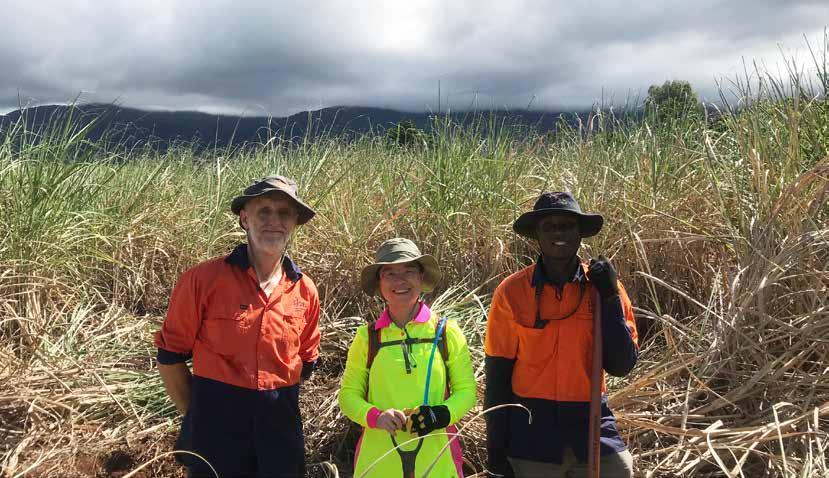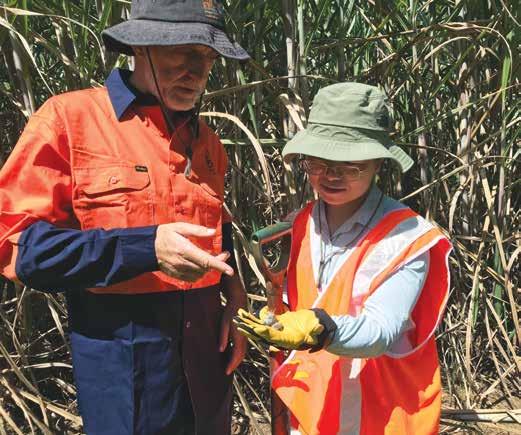
3 minute read
DEVELOPMENT OF A BIOPESTICIDE FOR SUGARCANE ROOT FEEDING PESTS
DEVELOPMENT OF A BIOPESTICIDE FOR
SUGARCANE ROOT FEEDING PESTS
Advertisement
Developing a sustainable alternative to agricultural chemicals for the control of greyback cane beetles is the focus of a new collaboration between Sugar Research Australia and The University of Queensland (UQ).
Led by Professor Neena Mitter, Director of the Centre for Horticultural Science at the Queensland Alliance of Agriculture and Food Innovation (QAAFI) at UQ, the project will harness breakthroughs in ribonucleic acid (RNA) based biopesticides for the sugarcane industry.
Neena said she was excited by the challenge, as the greyback cane beetle is from the same group of insects as the Colorado potato beetle, a major pest of potato crops. An effective RNA-based biopesticide has been recently developed for the potato beetle, which is now being progressed to the market.
Neena said it would be at least six months before early investigations on the cane beetle project could be reported.
She said this was due to there being no information to work with on the cane beetle’s gene expression or transcriptome sequence, so the team has had to start from scratch. Gene sequencing is vital to the project as it is through this process that those genes which are critical to the beetle’s survival or reproduction can be identified.
Once these genes are known, RNA interference (RNAi) can be applied to switch off or silence them so that the organism cannot survive.
Neena said the RNAi approach mimicked natural defensive mechanisms of the plant by using the pest organism’s own genetic messaging systems against itself. The technology could be compared to a plant vaccine.

(Left) The RNAi will be tested for effectiveness by SRA staff in Cairns who will artificially feed it to a population of cane beetles. Here, Dr Kevin Powell, SRA entomologist, and Dr Ivy Chen, University of Queensland Postdoctoral student, examine canegrubs dug up from a field near Cairns.
(Far left) Dr Kevin Powell looks for canegrubs with Dr Ivy Chen and Entomology Technician Samuel Bawa.
The RNAi will be tested for effectiveness by SRA staff in Cairns who will artificially feed it to a population of cane beetles.
Bioclay™ RNAi biopesticide, invented by Professor Mitter and her UQ colleagues, Professors Gordon Xu and Max Lu in 2017 will be explored as the mechanism to deliver the RNAi for cane beetles
Bioclay™ is a safe medium which is applied on the plants to deliver the RNA in a way that protects it from being destroyed by sunlight or washed away by rain.
The target pest is fed the RNA when it eats plant parts treated with the Bioclay™. It works by turning off the pest’s own survival genes, without any genetic modification of the plant taking place or toxic residue left behind.
Neena said BioClay™ represented a great leap forward, promising a revolutionary alternative to chemicals, although the technology’s full potential would take time to realise. She said two major challenges need to be overcome before a biopesticide could be developed for the sugarcane industry - firstly, the effectiveness of the RNAi in controlling cane beetles and secondly, whether sufficient levels of RNAi applied to the leaves of the sugarcane plant will find its way to the roots to be consumed by the canegrubs.
Once the concepts are proven, it will take another three to five years to validate the concept in field trials and for the completion of regulatory requirements before the product can be fully developed.
Neena said sugarcane industry stakeholders were keen for an effective alternative to chemical solutions such as imidacloprid and believes the RNAi technology can deliver a solution.
It’s hoped findings may also offer translation potential to target other pests and diseases of sugarcane.
For more information about the project, Innovative RNAi biopesticides for management of sugarcane root feeding pests, is available on the SRA website via the QR code provided.
SRA acknowledges the funding contribution of the Queensland Department of Agriculture and Fisheries for this research activity










